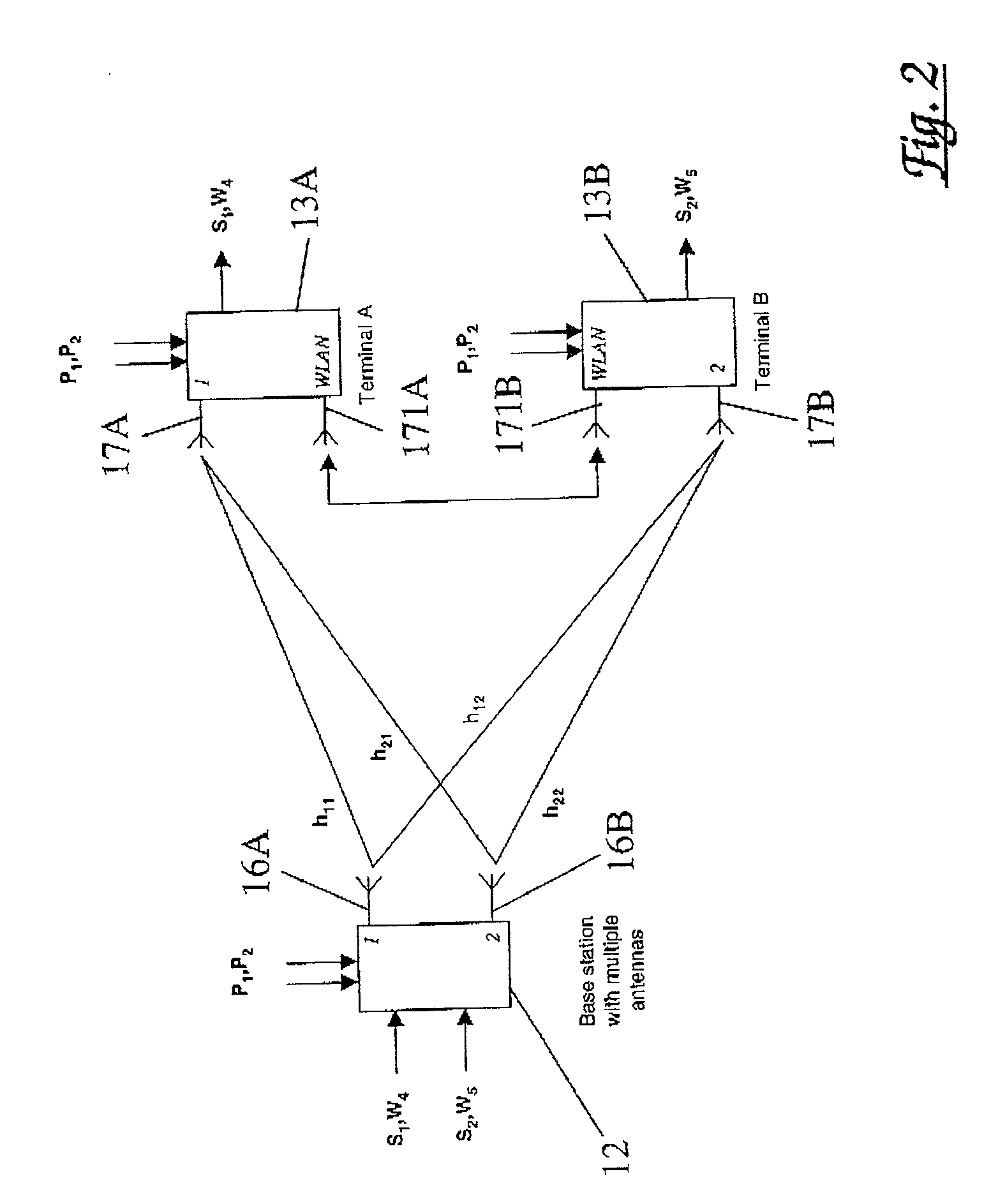Wireless Communications System and Method
a wireless communication and wireless technology, applied in the field of wireless communications system and method, can solve the problems of limiting the application of spatial processing to higher frequencies and or larger antenna installations, increasing the pressure on the restricted amount of radio spectrum, and diversity gain, so as to facilitate the recovery of signals intended, reduce channel distortion, and improve spectral efficiency
- Summary
- Abstract
- Description
- Claims
- Application Information
AI Technical Summary
Benefits of technology
Problems solved by technology
Method used
Image
Examples
Embodiment Construction
[0043]The application of our technique in a mobile cellular radio environment is shown diagrammatically in FIG. 1 and consists of a macro-cellular architecture overlaid on a pseudo micro-cellular architecture as will be described below.
[0044]The cellular architecture shown in FIG. 1 will typically comprise a CDMA (Code Division Multiple Access) system using spatial processing. Although this is our preferred embodiment, it will be apparent to those skilled in the art that the methods described below are also applicable to other multiple access techniques such as TDMA (Time Division Multiple Access).
[0045]As indicated in FIG. 1, each macro-cell 11 is centred on a base station 12. The base station is provisioned with multiple antennas 16, although it is also envisaged that a group of base stations, each equipped with a single antenna, could cooperate to similar effect. Spatial processing is employed within the macro-cell 11, providing spectrally efficient links between the terminals in...
PUM
 Login to View More
Login to View More Abstract
Description
Claims
Application Information
 Login to View More
Login to View More - R&D
- Intellectual Property
- Life Sciences
- Materials
- Tech Scout
- Unparalleled Data Quality
- Higher Quality Content
- 60% Fewer Hallucinations
Browse by: Latest US Patents, China's latest patents, Technical Efficacy Thesaurus, Application Domain, Technology Topic, Popular Technical Reports.
© 2025 PatSnap. All rights reserved.Legal|Privacy policy|Modern Slavery Act Transparency Statement|Sitemap|About US| Contact US: help@patsnap.com



